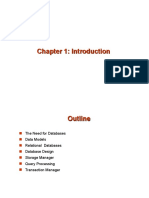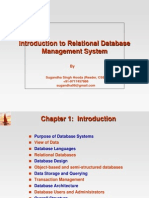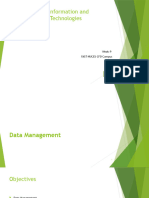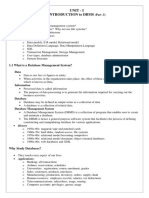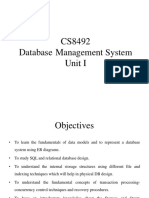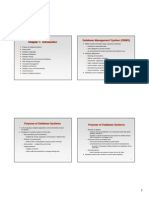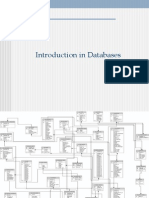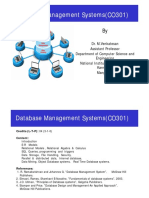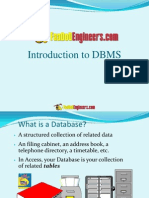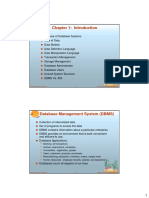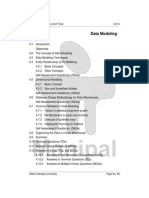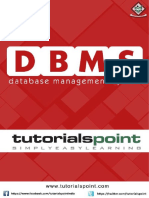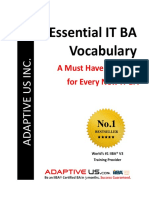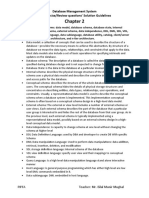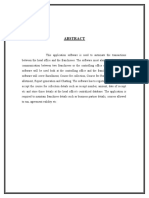0% found this document useful (0 votes)
69 views45 pagesDBMS - Part 1 - Introduction
The document discusses database management systems (DBMS) and their advantages over traditional file-based data storage. A DBMS allows for data independence, efficient access, integrity, security and concurrent access. It stores information about an enterprise as interrelated data accessible through programs. Common database applications include banking, airlines, universities, sales, manufacturing and human resources. A DBMS also handles issues like buffering, querying, concurrency, recovery from crashes and access control.
Uploaded by
INN ChannelCopyright
© © All Rights Reserved
We take content rights seriously. If you suspect this is your content, claim it here.
Available Formats
Download as PPT, PDF, TXT or read online on Scribd
0% found this document useful (0 votes)
69 views45 pagesDBMS - Part 1 - Introduction
The document discusses database management systems (DBMS) and their advantages over traditional file-based data storage. A DBMS allows for data independence, efficient access, integrity, security and concurrent access. It stores information about an enterprise as interrelated data accessible through programs. Common database applications include banking, airlines, universities, sales, manufacturing and human resources. A DBMS also handles issues like buffering, querying, concurrency, recovery from crashes and access control.
Uploaded by
INN ChannelCopyright
© © All Rights Reserved
We take content rights seriously. If you suspect this is your content, claim it here.
Available Formats
Download as PPT, PDF, TXT or read online on Scribd
/ 45








